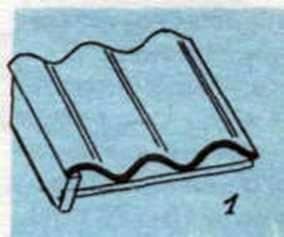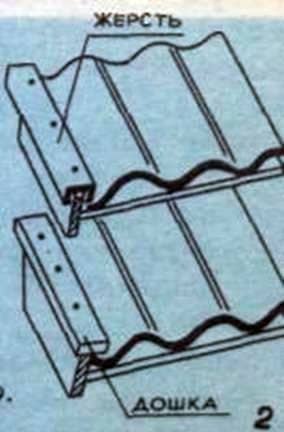
Fig. 1 wrong
It often happens that during the construction of a house you will not pay attention to some minor, at first glance, flaws, you will not eliminate it in a timely manner, and it will make itself felt at the first opportunity. And for a long time sometimes it is necessary to break the chapter, where do these troubles come from, where to look for the cause of what, say, the roof is leaking. Though to that it proceeds, it is visible “to the unaided” eye – the broken sheets of a slate. But why do they break or even break during a strong wind? It is unknown… The owner will change the broken slate leaves to a new one, glance after a while, and they are broken again, again the ceiling begins to wet. Well, right “the enchanted roof.”
And the owner does not know that he “charmed” that roof himself. Perhaps, wishing to save on materials and work, or through ignorance, but put the last sheets of slate on the roof as shown in Fig. 1, i. e. “wave” up above the pediment board. And now even a weak wind, blowing under that “wave”, breaks the slate.

Fig.2 correctly
So, to “disappoint” the roof, it does not need to be blocked. It should only be, replacing the broken slate leaves, fix along the edge of the roof (pediment) windproof board. You can make it as shown in Fig. 2.
Наващивание рамок вощиной. Как натянуть вощину на рамки.
Useful tips for the amateur beekeeper